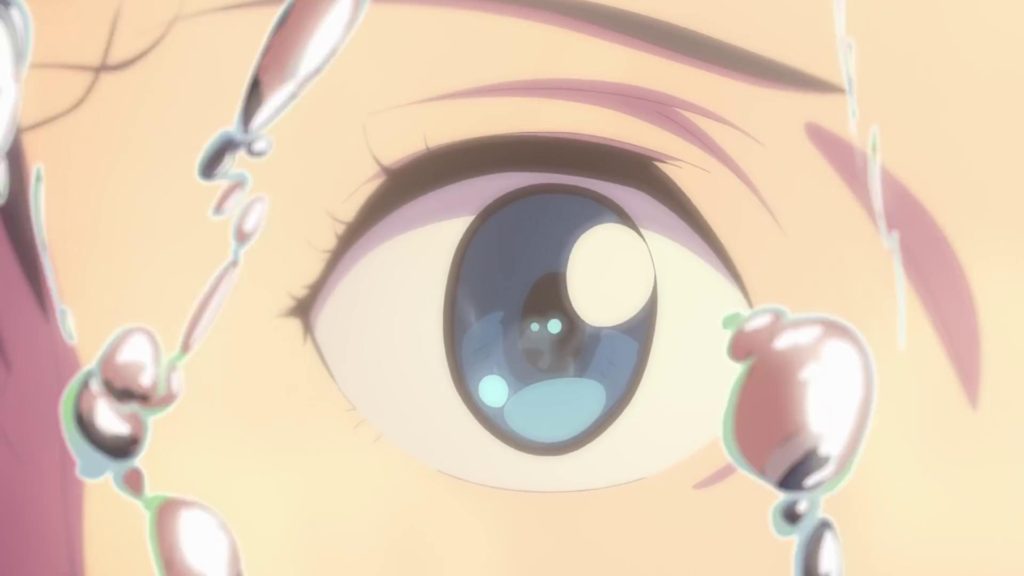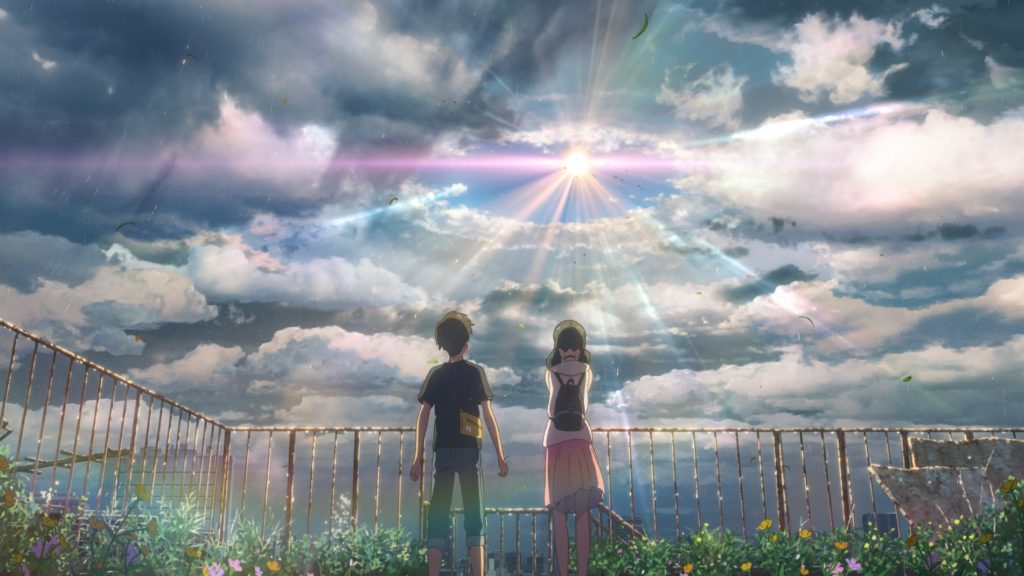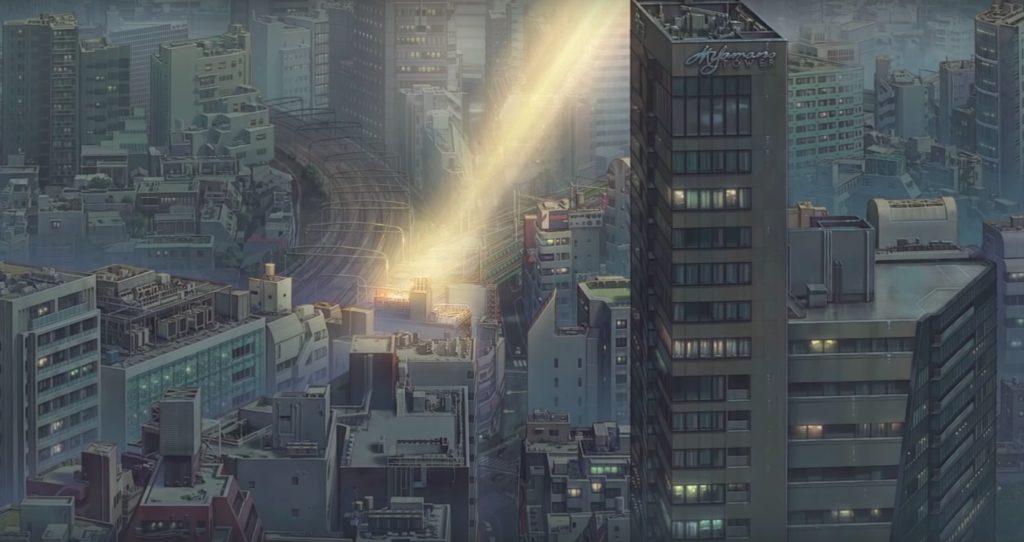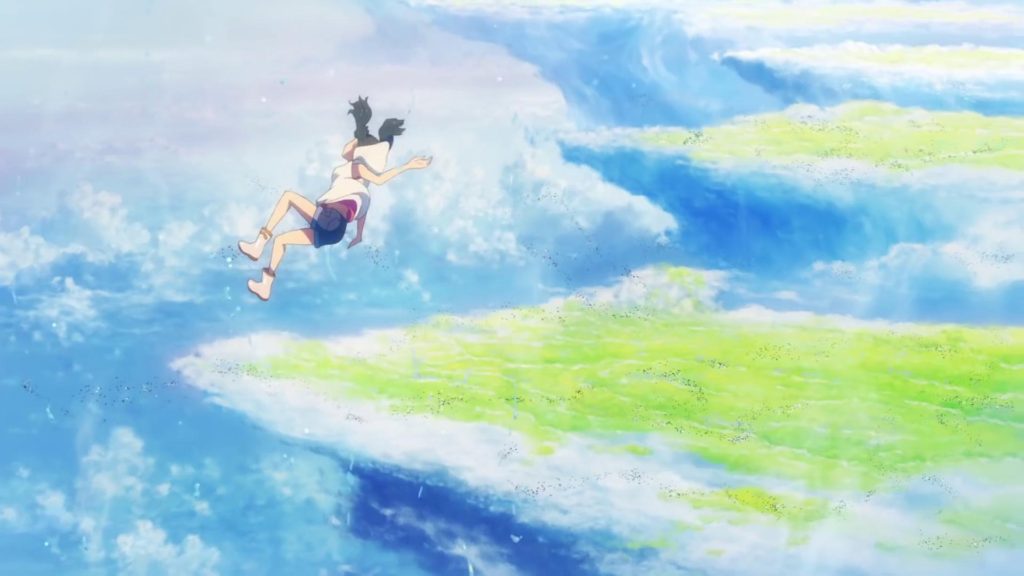Japanese director Makoto Shinkai’s latest film Weathering With You had its American East Coast premiere at Anime NYC this past weekend. Weathering With You is a worthy successor to his last massively popular effort Your Name., and over the course of the film’s two hours, Shinkai explores climate change, the supernatural, teen hormones, and the shifting Tokyo landscape. The movie officially debuts in the U.S. on January 17, 2020, so keep reading if you’d like a spoiler-lite analysis of what’s in store.
The following contains minor spoilers for Weathering With You.

Opening with its protagonists in emotional turmoil while Tokyo is wracked with torrential downpours, Weathering With You is the rare animated film where water acts like a third main character. Dripping, flowing, evaporating, condensing, and globulusly defying gravity, the liquid serves as a constant, appearing in every scene and defining the movie’s art—as well as the characters’ actions. Rain, after all, is their reality.
Sixteen-year-old runaway Hodaka Morishima has just grabbed a boat to Tokyo and is living in soggy homelessness as he searches for work, while Hina Amano struggles to work part-time to eke out a living for her and her little brother Nagi in the wake of their mother dying. Hodaka and Hina meet by chance, of course, and when Hodaka learns that Hina can control weather patterns for brief periods of time, they profit off the gift via creating a website offering her services for events.

Aesthetically, this gives Shinkai and his team at CoMix Wave Films and Story Inc. lots and lots of opportunities to animate both the towering, sprawling Tokyo cityscapes as well as its dirty underbelly. It’s all drenched, of course, an all the more impressive feat because of the notorious difficulty of animating water and other liquids. Nonetheless, the artistic detail is staggering and the animation’s movements are flawless, whether it’s a gloomy closeup of rain pitter-pattering on a windowsill, an action sequence framed from the perspective of a scooter zooming through flooded streets, or drone-like shots panning through sky and skyscrapers. In his earliest directorial efforts, in Your Name., and now in Weathering With You, Shinkai has always used real-life locations and phenomena as his models, making the supernaturally powerful rain’s effect on that landscape in Weathering With You all the more stunning. Also, Shinkai mentioned in a recent IndieWire report that the building used as the setting for Weathering With You‘s climactic sequences has recently been demolished. Independent of their own narratives, his films become the artistic legacies of the real-life locations he features.

Because nonstop rain has pounded the Tokyo of the film, Hina and Hodaka’s business is massively successful. As they make some cash and their feelings for each other grow, they accrue a funny and well-sketched supporting cast of characters around them: Hina’s brother Nagi is a reliable source of comic relief, as is Rain, the cat that Hodaka adopts; Hodaka’s journalist coworkers, the cranky mentor-employer Keisuke and the exuberant Natsumi, serve as light expository decanters of Shinkai’s layered myth-making and canny foils to Hodaka’s own journey to learning how love works.
We soon learn, however, that Hina’s powers as a “clear-weather girl” are tied to an old Shinto legend—and that they come at a cost. (I won’t reveal that cost in this review, but trust that it propels the film’s second half.) The fantasy dramatically climaxes when the police investigate Hina and Hodaka’s status as unsupervised minors. While the plot’s climate-change subtext gets unsurprisingly heavy, the film never loses sight of the fact that, in the end, these are two teenagers desperately trying to understand their feelings while also scraping by some cash to feed themselves—even as they control this landscape-shaping power.

The film’s second half has frustrated some early reviewers, partly because it doesn’t neatly conform to Stan Lee’s long-established Western superhero maxim that “with great power comes great responsibility.” In that sense, Weathering With You has more in common with Katsuhiro Otomo’s Akira than it does with Shinkai’s previous film Your Name. In Your Name., the two leads—once they realize the ramifications of the fantastical forces that could kill a lot of people—try to use their powers to prevent that reality from happening. In Akira and in Weathering With You, the lead characters make crucial, selfish, and often self-destructive decisions with the powers at their disposal…because that’s just what you do when you’re 15 and you’re in love.

The film doesn’t hand-wave away the consequences of those decisions, especially if you compare any of the establishing shots from the first half of the film to those of its final minutes, but it doesn’t moralize over the poor homeless and orphaned kids who made them. This movie is about climate change, and it is about the collective threat we face, but it’s not FernGully: The Last Rainforest, and its heroes are not exempla.
Shinkai has said, also in IndieWire: “I don’t think having an enemy coming to threaten the world and having a hero saving the world is a story that we can tell right now. In reality, that’s not the world that we live in. I wanted to have the audience enjoy these two people who survive in spite of the crazy weather and enjoy their life.”

What Weathering With You does offer, instead, is water. Rainwater cleans, damages, soaks, and ruins and enriches the lives of several people in the film. Water is in the massive tears the characters shed, in each of their bodies, and inescapable as a meteorological crucible. It’s also the environment in which the characters’ young love, innocence, and affections feel most secure. The film respects water as an unpredictable and often mysterious force that erodes and nourishes our world. Extreme rain can cripple infrastructure and drown a city just as it can bring lushness to a river valley. As one character reminds us, anvil-shaped cumulonimbus clouds can carry enough water to fill lakes. Weathering With You‘s story draws a direct connection between the giant anvil of water and the life of someone you love: choosing to drop either is out of the question.
Thanks for reading The Dot and Line, where we talk about animation of all kinds. Don’t forget to follow us on Twitter and sign up for our newsletter.


